

Hundreds of Studio Units Under Construction on De Haro Street

BY MOUMITA CHAKRABORTY
Shovel is hitting dirt at 300 De Haro Street, where an 11-story building consisting of 425 280- to 300-squarefoot studios is being constructed. The residences will be “both furnished and unfurnished; furnished units providing queen-sized Murphy beds which convert from a sofa and coffee/dining table, with all units including kitchenettes, an ensuite bathroom, and a work area,” according to DM Development.
Former businesses at 300 De Haro were given 90 days’ notice last January. Since then, the retailers and restaurants formerly inside the space – including Tip Toes Salon, Torraku Ramen, and Cafe da Fonk – have either closed or consolidated at other neighborhoods. Tip Toes had been at the location for 17 years, an early harbinger of a neighborhood shifting from being largely working class to one beset with salons and cafes.
According to Ansen Chen of Torraku
Ramen, the De Haro space was the eateries’ first brick and mortar outlet since transitioning from a food truck in 2017.
“Things got quiet after 2022,” Chen said, “We got lucky in that we were able to open a second location on Lombard and shift to delivery service as well.”
The 300 De Haro project is the first mixed-income project in San Francisco to utilize Senate Bill 35, amended by Senate Bill 423, and adopted in 2023. The
SF-Marin Food Bank Preparing for Sharp Reduction in Federal Support
BY TAMALA MOTTA
The San Francisco-Marin Food Bank, which has provided food insecure communities with access to nutrition for more than three decades, is facing new challenges amidst severe federal cuts to SNAP, the Supplemental Nutrition Assistance Program, known as CalFresh in California.
The SF-Marin Food Bank, previously a project of the San Francisco Council of Churches, began independent operation in 1987, moving to its Potrero Hill location at 900 Pennsylvania Avenue in 1997. In 2011, the San Francisco Food Bank merged with the Marin Community Food Bank, which significantly increased the amount of food distributed in Marin communities.
In 2024, the food bank dispersed 67 million pounds of food – upwards of 17 million meals – and served 53,000 households weekly. The nonprofit works with more than 300 partners and 215 pantries in San Francisco and Marin.
In addition to food distribution, the SF-Marin Food Bank places pantries at schools, community centers, and colleges; offers nutrition education, teaching participants how to prepare low-cost healthy meals and snacks; assists participants with CalFresh enrollment; delivers food to seniors and adults with disabilities; and collaborates with health clinics to connect patients to free food and education.
According to Governor Gavin Newsom, federal cuts to SNAP, expected to begin in 2028, after U.S. Congressional
elections scheduled to take place midway through the Trump Administration, will reduce funding to California by between $2.8 to $5.4 billion annually. This, in turn, could trigger the need for the state to tighten SNAP eligibility and/ or reduce SNAP benefits for seniors, people with disabilities, and children. Simultaneously, federal support for Medicaid – known as Medi-Cal – will be reduced by roughly $28 billion.
“We are very concerned about the impact of cuts to SNAP/CalFresh recipients in San Francisco and Marin,” said Marchon Tatmon, SF-Marin Food Bank Associate Director of Policy and Advocacy. “There are 25,000 households14,000 families with children and 11,000
Green Benefit District Renewed Until 2040
BY JESSICA ZIMMER
Sixty-one percent of 1,968 property owners approved renewing the Dogpatch and Northwest Potrero Hill Green Benefit District (GBD) for another 15-year term, until 2040. Support was significantly lower than the more than 90 percent ratification rate organizers had anticipated based on pre-election surveys. Still, a simple majority was enough to secure unanimous endorsement from the San Francisco Board of Supervisors last month.
“From maintaining parks and sidewalks to planting trees and improving public spaces, the Dogpatch-Northwest Potrero Hill Green Benefit District has delivered real results led by the people who live there,” said District 10 Supervisor Shamann Walton. It supports “…our climate goals, improves quality of life and builds community from the ground up at a time when we need more green infrastructure, culture, and equity in our neighborhoods.”
Prior to the election, GBD’s assessment base consisted of 1,403 properties, with 1,150 owners. The GBD originally comprised two zones. The Dogpatch area was bounded by Mariposa Street to the north, Illinois to the east, Iowa and Pennsylvania streets to the west, and Cesar Chavez to the south. Northwest Potrero Hill was defined by 16th Street to the north, Potrero Avenue to the east, Vermont and Kansas streets to the west, and 19th to the south.
As part of the renewal vote GBD’s boundary was moved roughly two blocks east to Texas Street between Cesar Chavez and part of 25th Street. GBD now takes responsibility for management and maintenance of Tunnel Top Park, above the southern portion of the Caltrain tunnel. Northwest Potrero Hill will expand one block south to 20th Street between Utah and Kansas streets, incorporating stretches of San Bruno Avenue and Vermont Street between 19th and 20th streets.
The 2025/2026 annual assessment revenue is roughly $882,000, with the district receiving another $18,000 in contributions. The fee for commercial, residential, and other parcels is $0.1136 per square foot; industrial parcels, $0.0568 per square foot. In most cases, this amounts to close to $300 a year per
Construction of an eleven-story 425 unit development at 16th and De Haro streets is underway, despite neighborhood concerns. Over the years the triangular lot at the site housed Rustico, The Center for the Book, El Sur, Gitan, Sally's, Bunn Mike, My Good Pie, and Roadster, among others. PHOTO: Ed Rudolph
DE HARO continues on page 11
FREE Serving the Potrero Hill, Dogpatch, Mission Bay and SOMA Neighborhoods Since 1970
AUGUST 2025
PUBLISHER’S VIEW
Fulbright
BY STEVEN J. MOSS
In June most members of the Fulbright Student Program board resigned, after the Trump Administration blocked “a substantial number” of scholars from receiving grants. Like so many federal initiatives, the fate of the roughly $300 million, 80-year-old exchange program is uncertain.
U.S. Senator J. William Fulbright of Arkansas founded the program in 1946, as part of a burst of post-World War II optimism about the possibility of peacefully knitting countries together, with the United States at the center. It sponsors scholars from 160 nations to teach, research, perform and create art in the U.S., with Americans doing the same abroad.
In the aughts I was a Fulbright Scholar in India, helping to develop a solid waste disposal system in a small village. It’s hard to convey, or perhaps even fully know, the value of the experience. My knowledge of India is much deeper than I’d have acquired solely as a tourist. I contributed in a tiny way to solving an environmental problem and
may have nurtured positive feelings towards the U.S. as a result.
Whether that benefits the American taxpayer, who paid in the range of $20,000 for my junket, is largely predicated on the belief that cultural exchanges are the building blocks of a better world, creating waves of understanding, connectiveness, and peace. In today’s more nativist zeitgeist, that’s a hard sell.
In may be that in the present postglobalist period, the Fulbright program needs to be reimagined to help stitch together our own fractured nation. Rather than an exchange between foreign countries, it could be recalibrated to cultivate conversations within our internal “nations.”
There are 326 Native Tribal reservations in the U.S. Few Non-Natives have visited these communities or could even name more than a handful. Many Tribes would benefit from residential engagement with talented educators,
PUBLISHER'S VIEW continues on page 14
SHORT CUTS
SPCA Clipped
Last month, the Society for the Prevention of Cruelty to Animals announced that it was laying off 32 people, 11 percent of its staff. Two-thirds of the cuts were made to the nonprofit’s animal hospital, including veterinary assistants and registered veterinary technicians. The rest was associated with administrative positions, the shelter medicine program, including one veterinarian, and the department that runs the adoption center. It’s SPCA’s largest staff reduction in at least 15 years.
Parks and Wreck
San Franciscans are proud of our parks, particularly the shiny new and renovated ones that’ve emerged in Dogpatch and along the Central Waterfront, extending to India Basin. But there’s signs that municipal leadership over these spaces – particularly General Manager Phil Ginsburg – is past their prime and should find jobs more suitably sleepy. Ginsburg presided over the slow-moving corruption of the San Francisco Park Alliance, and oversees a department that finances itself, in part, by charging large amounts of overhead to “manage” park renovations, a similar, if legal, version of what felled the Alliance. He’s chronically neglected proper policing of or effective signage at Dolores Park, creating the conditions for such recent ugly incidents as the attack of University of California, Berkeley film professor Damon Young and allowing the space to be the stage for weeks of uncontrolled, dangerous, fireworks.
Ginsburg has been at Parks and Rec for 14 years. That’s long enough.
Ice Cold
According to an undocumented construction worker who has periodic projects in San Francisco, last month United States Immigration and Customs Enforcement raided Home Depot in San Rafael, picking up day labors waiting for work in the parking lot. The constructor worker hid in his car, with the knowledge that he could no longer purchase supplies at the hardware store, an integral part of his job… Is this really what Americans want: scaring, jailing and deporting people looking to work to feed their family? Perhaps it’s time to bring back and expand the Bracero Program, an agreement between the United States and Mexico, established in 1942, that permitted millions of Mexicans to work temporarily in the U.S., primarily in agriculture. Initially, the program addressed World War II labor shortages, but it continued until 1964. Not aid, labor trade!
Dear Readers
Tell our local merchants you saw their ad in The Potrero View!


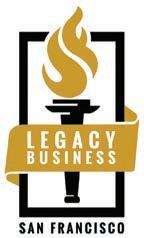
PUBLISHER Steven J. Moss
ACCOUNTING MANAGER Catie Magee
MARKETING MANAGER Richard Romero
PRODUCTION MANAGER Helena Chiu
THIS MONTH’S CONTRIBUTORS
Moumita Chakraborty, Madeline Cho, Kamesh Darisipudi, Thomas Hunter II, Peter Linenthal, Rebekah Moan, Sara Moss, Steven J. Moss, Tamala Motta, Ed Rudolph, Kayla Whitehouse, Jessica Zimmer
Claudia Siegel is such a professional and she excelled in every aspect of
Claudia has an established business relationship with a remarkable list of service vendors. She excelled in making our property market ready on a tight
From listing through closing, our process took less than five weeks and produced three offers above asking price. Claudia's magic is her experience marketing high-end real estate, her constant attention to every detail, and her unwavering pleasant can do attitude. Yes, do hire her!
-Glenn M.

War Interrupts an Internship
BY SARA MOSS
Like many of my generation, after I graduated from college I returned home to live with my parents. For the ensuing year and a half, I worked part-time at Grattan Elementary School in Cole Valley and searched, albeit without much energy, for what to do next.
In one of our “What are you doing with your life?” conversations, my mom mentioned Onward, a two-month immersive internship in Tel Aviv. Although worried I wouldn’t get in because the program is highly competitive, I applied and, a few months later, was accepted. I was assigned to work at a nongovernmental organization helping to write grant reports and evaluate funding requests, many of them associated with recovery from post-traumatic stress. I was excited to start my next quest.
I’m not religious but have extended family in Israel on my mom’s side. They’re Modern Orthodox, obedient to Jewish laws and rituals, but not judgmental about other Jews who have a different relationship with the religion.
My cousin, Miram, picked me up from Ben Gurion Airport. As we drove to her home in the Tel Aviv suburbs, she explained that occasionally a siren might go off, warning of a potential missile attack from Gaza or Yemen, remnants of the unresolved conflict with Hamas. I needed to download an app, Home Front Command, that provides a shrill notification shortly before an alarm is triggered, with instructions as to whether and when to proceed to a safe room or bomb shelter.
After staying with my family in their small Orthodox community for a few days, I moved into an apartment in Tel Aviv. I was living with six other young adult women in a cute two-floor suite with amazing views.
On our first night we had dinner with our program leader, Maya, and a group of Israelis. Just as we were sitting down to eat, our phones shrilly buzzed. Stay near a shelter, a siren will go off in five minutes, announced Home Front Command. Eyes widened around the table. We all looked at Maya to see what to do next.
“Follow the other Israelis into the shelter,” she instructed.
The air felt tight; what if it hits us? I worried.
In our apartment, there's a room that consists of a small, windowless, reinforced chamber otherwise used as a bedroom. This is our shelter in case of an emergency. Every apartment in Israel has something like it.
Inside, the makeshift refuge is warm and calm; people are laughing, being normal. This is what normal life is like in Israel. After ten minutes, we’re told we can leave. Without saying a word to one another, we return to dinner.
After the first siren, hearing an alarm isn’t as scary. It becomes a game, looking at Home Front Command to see when the next siren will go off, go to the bomb shelter, or the closest thing to it, wait ten minutes, then carry on with the day.
A couple of weeks into my internship, I’m out with friends in Tel Aviv. We’d gone to a few bars and were aimlessly wandering when Home Front Command issued a warning. Finding the nearest saloon, we’re welcomed by the staff to shelter until the all-clear signal. The siren roars, we wait ten minutes, walk out, and continue with our night. This cycle goes on for a few more days. Until June 13th.
It was the night before the Gay Pride Parade, the first scheduled since the October 2023 Hamas attacks. Upwards of a quarter-million people were expected to attend. My housemates and I were excitedly making plans when we started getting alerts from news feeds that Israel was going to attack Iran to dismantle its nuclear program. Suddenly, things shift. This isn’t just a siren; we won’t be sheltering for a short period and then returning to normalcy. People are glued to their phones, expecting an announcement of some kind, unsure of what will happen.
The air feels anxious. But everyone maintains a kind of stoic calm, silently praying that everything will be fine. We resume the night as normal. Friends start to pour into our apartment to socialize and drink.
WAR continues on page 15
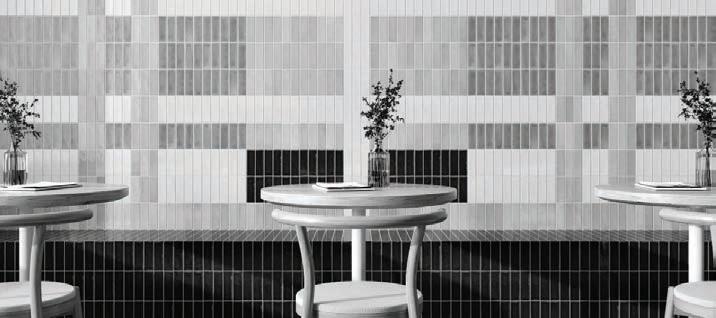


The Potrero Dogpatch Merchants Association | potrerodogpatch.com
We meet on the 2nd Tuesday every two months from 9:45 - 11:00 a.m. Next meeting: August 12 at the Goat Hill Pizza, 300 Connecticut Street. The neighborhood’s only business association recognized by the State and the City.
Dogpatch Business Association | dbasf.com
NEWS update to share - the Dogpatch Business Association has officially become a 501(c) (3) nonprofit organization, now known as the Dogpatch Art & Business Association (DABA). In line with our mission to better serve our community, we are also changing our name to reflect this new chapter.
The name change will enable us to expand our outreach and enhance initiatives that promote local art, business growth, and community engagement. We look forward to hosting more events, providing valuable resources, and strengthening our neighborhood connections. Stay tuned for upcoming events and further updates!
Business owners and community members are invited to get involved!
• Join the DBA! (dbasf.com)
• Sign up for our newsletter to find out about member meetings, opportunities, and local news
• Follow us on Instagram @destinationdogpatch to learn more about Dogpatch businesses, events, and activities
• Explore Dogpatch through a curated wayfinding map of local businesses, available online at https://linktr.ee/exploredogpatch
Dogpatch Neighborhood Association (DNA) | dogpatchna.org
We nurture civic participation & community building while fostering the unique character of Dogpatch. Our meetings are open to all, but membership is the lifeblood of the organization. You do not have to live within the Dogpatch boundaries to be a member or come to meetings, you just need to care about what happens in Dogpatch. Monthly Meetings are held the second Tuesday of every month - 7 p.m. at The Dogpatch Hub.
There’s no monthly meeting in August - our next monthly meeting takes place Tuesday, September 9th - join us!
JOIN DNA TODAY!
Friends of Jackson Park (FoJP) | friendsofjacksonpark.org
Summer’s Here—Let’s Party in the Park! Mark your calendars: the Play in Your Park Party is taking place on Saturday, September 6th! It’s going to be a day of fun, games, music, and community vibes at Jackson Park. Got big ideas? Love planning parties? Want to help bring the fun to life? Join our planning crew! Email us at info@friendsofjacksonpark.org — we’d love to have you.
Let’s build the park our neighborhood deserves. Donate today at www. friendsofjacksonpark.org
Green Benefit District | GreenBenefit.org
Greetings, Dogpatch and NW Potrero Hill. We have big news! With 61% support from property owners in the district, the GBD has been renewed for another 15 years! Thank you for your support!
Join us for our Monthly Board Meeting on Wednesday, August 20th, from 6:30 to 8:30 p.m. at the Dogpatch Hub (1278 Minnesota St.), where we will discuss all the great things we are doing in the neighborhood.
Help make the Green Benefit District greener. Our next GBD volunteer event is at the Vermont Greenway & Eco-Patch on Saturday, August 16, at 10 a.m. Sign up for a GBD volunteer event at greenbenefit.org/volunteer or report an issue at greenbenefit.org/report-a-problem
The Potrero Boosters Neighborhood Association | potreroboosters.org
The Potrero Boosters Neighborhood Association informs, empowers and represents the residents of the Potrero district on issues impacting our community in order to develop and maintain complete, vibrant neighborhoods. We meet in person on the last Tuesday of each month at either the Potrero Hill Neighborhood House or the Dogpatch Hub, and continue to offer a Zoom option for those who cannot make it in person. Go to www. potreroboosters.org to learn more about our meetings and on how to join us!
Starr King Open Space | StarrKingOpenSpace.org
Join our monthly volunteer days on the second Saturday of the month. This month it is August 9th at 10 a.m. Donate to help keep Starr King Open Space open, accessible, and well-maintained for our neighborhood.
SF Funeral Home Offers Cremation by Fire or Water
BY REBEKAH MOAN
Pacific Interment Service, on Folsom Street, was founded by Francisco “Frank” Rivero in 1992, the year San Francisco experienced a peak in acquired immunodeficiency syndromerelated deaths, 1,641.
“He cremated AIDS patients when others were reluctant to do so,” said Lazaro Rivero, Frank’s son and coowner of the business. “Sometimes they didn’t have any money, but we helped them anyway.”
Today a cremation can cost from $1,300 to $8,000, less expensive than a traditional funeral with a burial, which can run tens of thousands of dollars.
Pacific Interment’s prices are about average for the Bay Area, with lower charges for direct cremation; the deceased is incinerated without a viewing, visitation, or funeral service beforehand.
The company also offers “witness cremations,” an important part of Buddhist tradition, whereby family, friends, and in the case of Buddhists, monks, can be present during the cremation process. Attendees conduct rituals and send the body into the cremation machine. A witness cremation costs more than a direct cremation.
Pacific Interment has its own crematory with a chapel attached at its Emeryville location, which makes witness cremations easier to facilitate.
Because Pacific Interment has a crematory, it’s able to accommodate the time constraints many Buddhist families have; they usually want cremations done within a specific day and time, according to their religious practices.
“A lot of times it’s within two to
three days of the death, which is very fast, and some funeral homes have a hard time doing that,” Rivero said.
Other funeral homes have to send the body elsewhere to be cremated and wait for the ashes to be returned. There’s a lot of paperwork involved, including death certificates and a medical examination.
“It’s a very crunched time frame but we’re good at getting everything filed for short notice witness cremations,” he added.
In 2023, the Riveros installed the Bay Area’s first aquamation system: cremation through water. There are just four aquamation providers in California. Aquamation appealed to Lazaro because it’s environmentally friendly. Traditional cremations release carbon and other air pollutants, use fossil fuels, and emit mercury and other heavy metals. They also potentially impact soil and water quality. An aquamation is also gentler than a flame cremation.
“Some people don’t feel comfortable with fire or flames and avoid cremation because of it,” he said. “The idea of water, because it’s a gentle process, is more comfortable. With a water cremation, the breakdown that occurs in the machine is actually the way the body breaks down naturally but it accelerates that natural process.”
The process occurs with the addition of potassium hydroxide, an alkaline substance that speeds up the body’s breakdown. The Riveros purchased a system from Bio-Response Solutions but given Frank’s experience with construction, plumbing, and as a general contractor, he tinkered with it. He adapted the machine such that the timeframe for an
aquamation dropped from eight hours to roughly four. Flame cremation takes about two hours.
“We’re happy with the way the Bio-Response machine turned out after we modified it, and so were the folks at Bio-Response,” Rivero said. “Now they sell machines with the same modifications my dad made.”
When the water cremation is completed, the family still receives ashes, but they’re a different color; a lighter, white to tan color as opposed to darker gray or black. They consist of the remaining bone fragments after the
water process, which, like traditional cremation, is reduced to a fine powder, with the bones processed to resemble the ashes produced by flame cremation.
“A lot of people feel obliged to spend large quantities of money and it’s not necessarily bad if they can afford it, but they can financially overextend themselves with funeral services,” Rivero said. “It’s important to know they can show their love for someone who has passed away without spending exorbitantly or feel obliged to purchase large amounts of funeral goods.”
Cathryn “Cat” Blum: Building Community on Potrero Hill
BY KAYLA WHITEHOUSE
Cat Blum has long led the movement to transform the 22nd and Carolina streets intersection into a community gathering space. Blum has lived next to the median for the last twenty-nine years, experiencing the neighborhood’s evolution from a place dominated by Irish immigrants, living alongside Russians, Slovenians, and Serbians, to today’s higher-income population.
Blum didn’t land on Carolina Street by accident. Originally from Colorado, she studied Visual Arts at Scripps College in Southern California. She fell in love with San Francisco during a family vacation during a school break, and vowed to one day return and have her very own bay window.
It took her just two years to move back, starting a career in film and photography production amongst San Francisco’s hilly streets. She graduated from Production Assistant to Location Scout, finding recording locations and managing complicated logistics.
It turns out that the intersection of 22nd and Carolina streets is a great place for filming. Poised at the top of Potrero Hill, the elevation offers a stunning view of Downtown skyscrapers to the north and sweeping sights of the neighborhoods at the base of Twin Peaks to the west. The unusual confluence of streets also makes for an extra wide intersection, offering the additional space needed for a film company’s entourage.

In 1984, Blum coordinated an iconic commercial for Pioneer Electronics France at this very spot; sending a modified grand piano majestically hurtling down 22nd Street, a production for which she won a Lion D’Or award at the
Cannes Festival International du Film Publicitaire.
When she saw a house for sale on the same street a dozen years later, it felt like fate; there was even a bay window.
Managing film shoots requires meticulous organization, a good visual memory, and the ability to talk with anyone. These same traits gave her confidence that she could advocate for the unkempt median outside her home. From the time she moved onto the block, she saw the green space’s potential to become a gathering spot.
“This is the reason for developing the Green Space,” Blum said, as she greeted a passerby at the intersection. “So that you can meet your neighbors and build community.”
Another neighbor drives by with a lowered window, calling out a proposal for monthly wine nights on the green. Bright pink decorations flutter from nearby bushes, cheerful remnants of a well-attended block party two weeks prior.
The area surrounding the Carolina Green Space is called “Skyline Terrace,” aptly named for its views. With the now defunct San Francisco Park Alliance serving as fiscal sponsor, in 2020 the Space was awarded a $132,000 municipal Community Challenge Grant, with 35 percent matched by private donations, paying for comprehensive greening two years later. Cat envisions a second community space, Sunset Terrace, at the median’s opposite end, with fiscal sponsorship by Greening Projects.
Blum is inspired by the “new kids on the block”, the fresh generation of
continues on next page
CAT
children who call Potrero Hill, specifically Carolina Street, home. She hopes that by collectively creating spaces for the community to come together it’ll engender a welcoming environment where these newest neighbors feel a sense of belonging.
If you carefully brush away the dirt at the steps that lead from the Skyline Terrace downhill, towards 23rd Street, hidden inscriptions reveal signatures of neighborhood youth from when the concrete was poured in 1967. Now well into their seventies, those who remain are part of the older generation of Hill residents; a glimpse into the future for the newest kids on the block, one volunteer day and block party at a time.
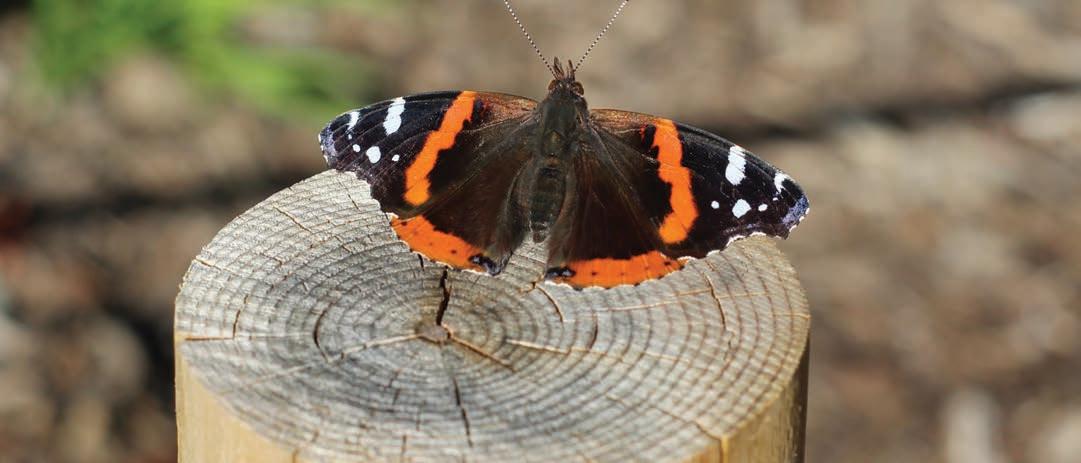
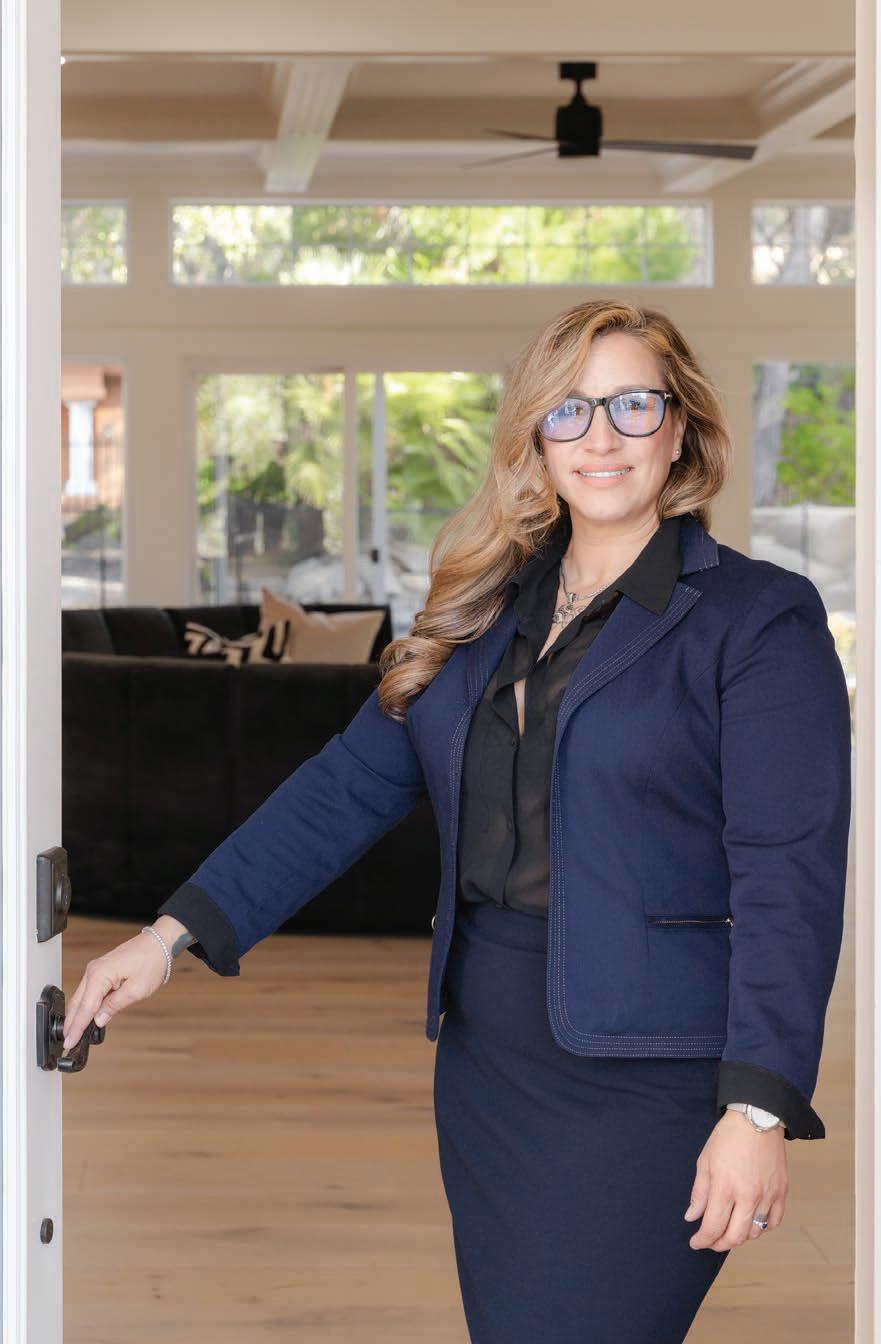
A Red Admiral butterfly at Esprit Park.
PHOTO: Madeline Cho
Jennifer LaRocca Realtor
Sabine Strauch Makes Wearable Art
BY REBEKAH MOAN
Mission Bay resident Sabine Strauch didn’t intend to get into jewelry-making. The 27-year-old started oil painting as a teenager. She received a Bachelor of Fine Arts from Cornell University in 2019 and a master’s in art education from Tufts in 2022. Her plan was to paint and instruct, but then life took a turn.
“I was hired to teach metalworking in Boston, and I had to learn it myself to teach the high school students,” she said. “I realized I really enjoyed working with the material and stayed late most nights creating my own pieces.”
She started making jewelry out of sterling silver, posting it to Instagram. Last year, she created a website and left teaching altogether.
“Teaching is incredibly rewarding but also all-encompassing,” she said. “It’s difficult to pursue an art career on the side because there’s not really a ‘side’ when you’re a teacher.”
While still an oil painter, Strauch is inspired to pursue jewelry-making as wearable art.
“We’re inundated with mass-produced products and there’s something so special about wearing a piece that’s handmade,” she said. “Especially when you understand how much work and care goes into it. The quality of the piece is so much more special than something that’s from a factory.”
It can take Strauch four hours to create a piece, requiring several steps, such as carving a wax casting mold, sawing and soldering, sanding and polishing the silver to a mirror finish
“It’s a very involved process but the endpoint is very satisfying,” she said.
Her “Drip Collection” was inspired by the LGBTQIA+ community, of which Strauch is a member.
“My Drip Collection was created as I thought about the fluidity of identity and how there’s more opportunity for our identities than the standard heteronormative culture dictates,” she said. “I wanted to create something that celebrates growth, change, and being open to more than what society might push or expect of us.”
The pieces are reminiscent of flowing lava or dripping candle wax; thicker globules flow into thinner globules and vice versa. There are no defined shapes and structures; each piece is more free form.
“I want people to feel special and celebrated with my pieces and identity is a part of that,” she said.
Rings often come in limited sizes, frequently only up to size 12. Strauch’s rings start at size two – most jewelry makers begin at size four – and are available to a size 16. She’ll custommake rings for people who fall outside those ranges.
Strauch and her wife, Basia Sudol, relocated to San Francisco from Boston after Sudol secured a job as lead solutions engineering at software company Stytch. They settled in Mission Bay last fall.
“I really love the neighborhood feel,” she said. “It’s amazing to be in such a creative environment. As a queer artist, Boston felt stiffer and more sequestered but here everyone is very open and excited to get to know each other. My studio is on Tennessee Street, and it has other artists and creatives. It’s incredible to meet other people and hear their stories.”
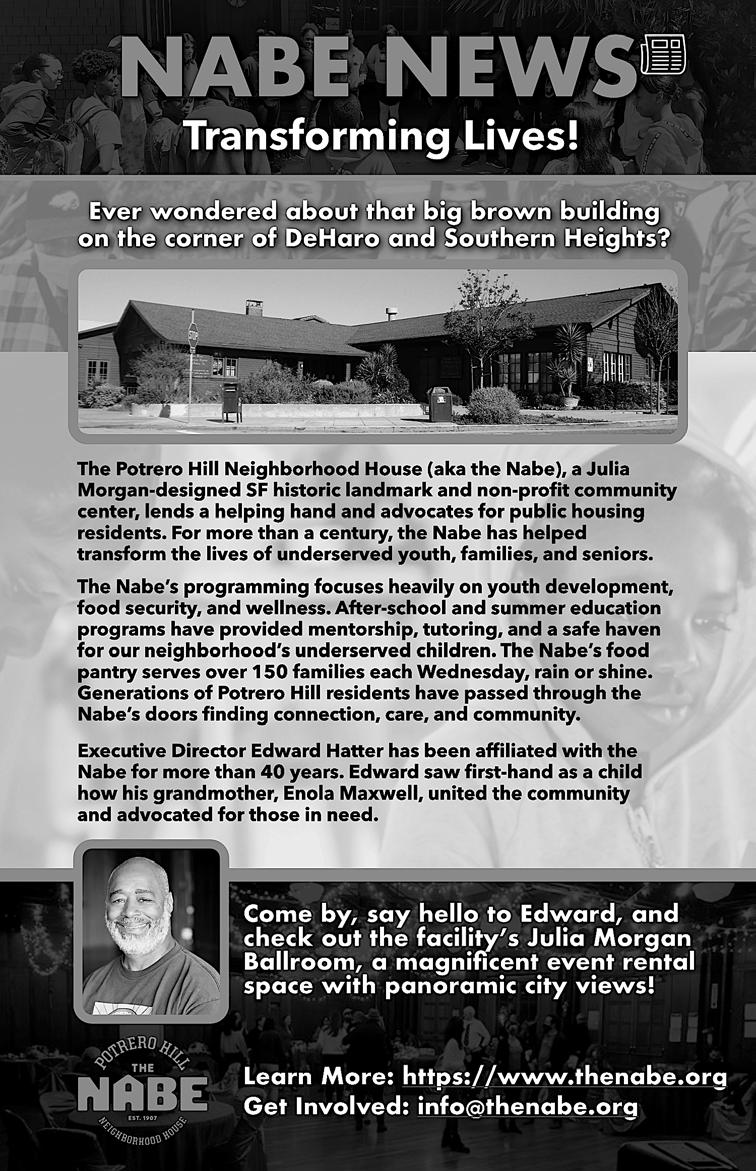
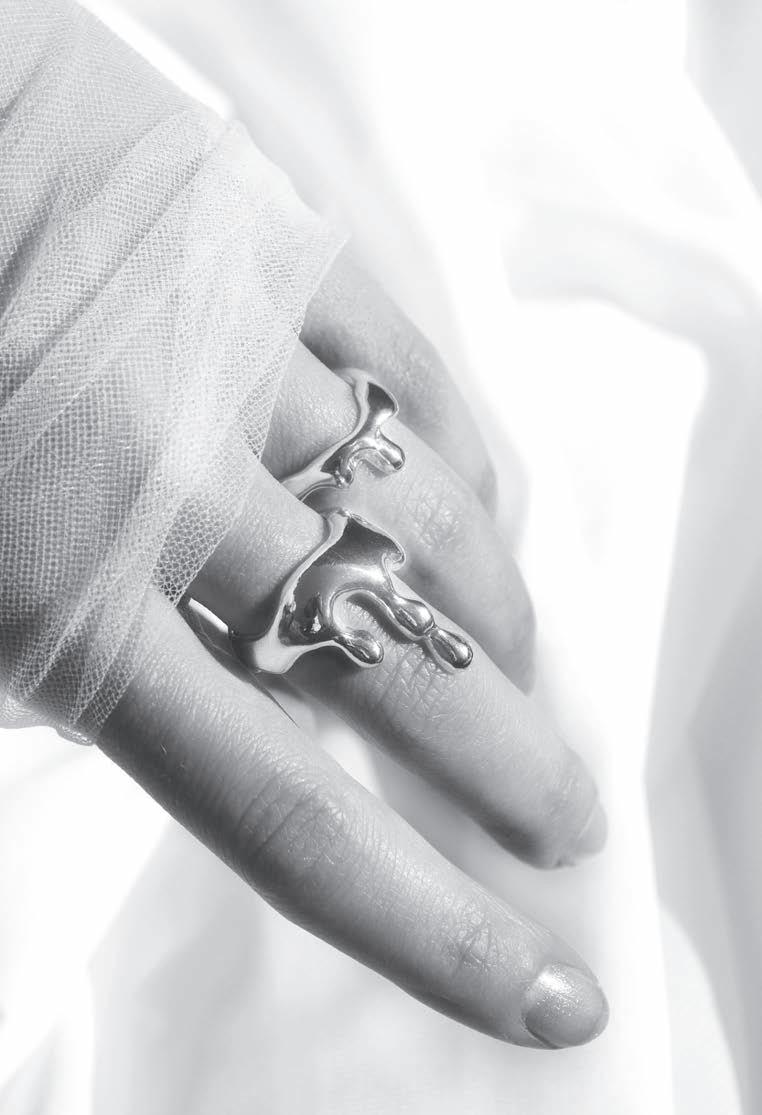

EVERYDAY 7:00AM - 6:00PM

Sabinemade's Drip Collection rings, featuring hand-dripped and carved sterling silver designs.
PHOTO: Sabine Strauch
Friends of Jackson Park Looking to Raise Another $10 Million
BY KAMESH DARISIPUDI
More than a decade ago Friends of Jackson Park (FoJP) and the San Francisco Recreation and Park Department (SFRPD) launched an effort to renovate and enlarge Jackson Park. The redesign features a refurbished and relocated clubhouse, indoor/outdoor amphitheater, and communal plaza.
As the population of Potrero Hill and adjacent neighborhoods have grown, “the demand for quality community space has never been higher,” said Daniel Montes, a SFRPD spokesperson.
FoJP has secured roughly $30 million of the estimated $40 million project cost. A significant portion of the money is dedicated to SFRPD oversight. Funds have come from multiple sources, including the 2020 Health & Recovery Bond, General/Open Space Funds, neighborhood developers, and individual donors. Over the past year FoJP has raised an additional $120,000 and secured $1.5 million in pledges from benefactors
The goal is to break ground in 2027, after completion of design and construction documents, and contractor selection.
Jude Deckenbach, director of Friends of Jackson Park, acknowledged ongoing fundraising challenges, citing

of 94107 have strongly expressed their support for the project,” she maintained, claiming that the City and County will fill any funding gaps.
FoJP will host the second “Play in Your Park Party” from 11 a.m. to 3 p.m. on September 6, on Carolina Street between Mariposa and 17th streets. The block party will feature local vendors, music, and food. More than 400 people attended the inaugural event in 2019;


COMMUNITY |AUGUST

8/1 Friday through 8/24 Sunday Theater: SF PlayGround Free-Play Festival
This four-week “fringe style” new works festival features 17 productions and 58 performances by artists from across the country. Presentations include improvised protest songs and how to resist an orange predator, with seasoned theatre professionals, first-time producers, and all-stars in every aspect of live performance, direction, and choreography. $0 to $30, donation-based. Simulcast and at the Potrero Stage, 1695 18th Street. For more information: https://bit. ly/4keFebV
8/2 Saturday and 8/3 Sunday Craft: Renegade Fair
Browse more than 250 artists at a curated summertime fair featuring creatives from the Bay and beyond. Indoors with some outdoor food
trucks. 11 a.m. to 5 p.m. Free; $5 suggested to help support Renegade Craft’s vision of an accessible, equitable, and inclusive creative economy.
Fort Mason Center, 2 Marina Boulevard. For more information: https:// bit.ly/3G4lVEv
2 sat
Animals: The Amazing Acro-Cats
The Amazing AcroCats are a troupe of trained domestic house cats, all former orphans, rescues, and strays, that give a one-ofa-kind, 90-minute purrformance that includes cats riding skateboards, jumping through hoops, ringing bells, balancing on balls, and other feats of agility and entertainment.
The show finale is the all-cat band: Tuna and the Rock Cats, who play guitar, drums, and piano. 2 to 3:30 p.m. $35.14 to $83.44. Proceeds benefit Rock Cats Rescue, a nonprofit focused on cat welfare, rescue, and adoption.
The Cowell Theater at Pier 2, 2 Marina Boulevard. For more information: https://bit.ly/44tAE3I
Craft: Rug Tufting Workshop
Learn the basics of tufting and create unique, textured artwork, including setting up a tufting frame and finishing touches. Take home a finished 12 by 12 inches wood-backed tufted design. No experience necessary. 1 to 3:30 p.m. $135.23. Humanmade, 655 Bryant Street. For more information: https:// bit.ly/4etQ4K9
PLAY IN YOUR PARK
4 mon
Health: Meditation 101
In this meditation class, learn how to cultivate self-compassion and inner peace. Through meditation and reflection, study how to let go of inner struggles and create a more peaceful and supportive relationship with yourself. No meditation experience necessary. First time participants receive two free class passes for any Sunday, Monday, or Tuesday meditation. 6:30 to 7:15 p.m. $10; free for members. Kadampa Meditation Center San Francisco, 3324 17th Street. For more information: https://bit.ly/46mY0KY
8/4 Monday through 8/8 Friday 8/11 Monday through 8/15 Friday Summer: Yoga Kids Camp
A movement-based day camp designed to help kids strengthen and stretch their bodies, minds, and hearts. Campers ages four to 12 will explore yoga and mindfulness through the IYK(R) High 5 Habits, enjoy free choice games, storytelling, and art projects, and outdoor time in Dogpatch parks. Session 1 August 4 to 8. Session 2 August 11 to 15. Both sessions: Monday through Friday 9 a.m. to 2 p.m. $550 per session. Dogpatch Hub, 1278 Minnesota Street. For more information: https://tinyurl.com/yu279s88
9 sat
Community: Bernal Heights Hillwide Garage Sale
Bernal Hillwide is arguably San Francisco’s largest single day garage sale. More than 100 households offer records, vehicles, water toys, collectibles, new and used, worn and pristine; Bernal Heights in bulk. 9 a.m. to 2 p.m. Free. Start at Cortland Avenue! For more information: https:// hillwide.com/

8/11 Monday through 8/13 Wednesday Astronomy: Perseids Meteor Shower
The annual Perseids meteor shower is the glittery result of Earth passing through debris left behind by a comet. Typically, viewers can see up to 40 meteors an hour, if there’s minimal light pollution and the clouds stay away. August 11 to 13. The shower is best seen just before dawn. For more information: https://bit.ly/40zNDQf
13 wed
Craft: Introduction to Letterpress Printing
This class introduces the process, materials, machines, and art of printing by hand on a Cylinder proof press. Participants will learn the basics of setting type and decorative ornaments as well as inking, locking up, and pulling a print. Beginners are welcome; all materials provided. 6 to 9 p.m. $85. San Francisco Center for the Book, 375 Rhode Island Street. For more information: https://bit.ly/45Q9oPw
16 sat
Art: Introduction to Intuitive Painting Intuitive Painting offers permission to explore and create. This isn’t a typical class to learn techniques and methods; instead, be expertly guided to tap in and listen to your intuition and paint from your heart, free from beliefs and concepts. In this way images happen spontaneously, unplanned and unexpected. 10 a.m. to 12:30 p.m. $45.59. The Center for Creative Exploration, 300 Chenery Street. For more information: https://bit.ly/3ZYlfHl
Music: Marcus Shelby Orchestra Internationally acclaimed bassist and composer, Marcus Shelby, brings his 15-piece big band to the Yerba
CALENDAR continues on next page
For 30 years, Heritage Bank of Commerce has partnered with Bay Area non-profits in service of a shared mission to make a positive impact on our community.
With high-touch, personal service, our dedicated relationship managers can provide a robust suite of banking products and services, excellent rates and very low to no fees to meet the unique needs of your non-profit organization.
Saturday, Sept 6th 11-3pm
Join your neighbors and bring your family & friends for a fun day in Jackson Park. We’re turning Jackson Park into the ultimate neighborhood party zone—a full day of fun, games, music, and community activities.
Basketball, Volleyball, Kickball, Martial Arts, Yoga, Face Painting, Arts & Crafts... Something for everyone!

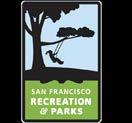
To learn how we can help support your business, call 415-229-8414 or visit us at One Montgomery St., Suite 2300, San Francisco, CA
CCA hosts an indigo dyeing workshop on August 23 and 24. PHOTO: California College of the Arts - Youth Programs & Continuing Education
Buena Gardens Festival. He’s used the ensemble to develop works exploring the abiding ties between jazz, blues and African American social and political movements. For this concert, Shelby gathered pieces from four previous YBG Festival commissions inspired by Harriet Tubman, Black baseball, the Ohlone tribelets and the recent pandemic. 2 to 3:30 p.m. Free. Yerba Buena Gardens (Esplanade), 773 Mission Street. For more information: https://bit. ly/44teTRM
Typography: 10 X 10 for 10
Letterform Archive celebrates its tenth anniversary with an exhibition of 100 staff picks, offering a glimpse into every corner of the Archive through the lens of the ten teams who steward the collection. Traverse centuries of graphic art: cuneiform tablet, contemporary artists’ books, icons of modernist typography and everyday ephemera. 1 p.m. Free. Letterform Archive, 2325 Third Street. For more information: https://bit.ly/40AeUSC
Books: Feasts on the Farm Signing Tamara Hicks, founder of Toluma Farms, and former Daily Driver owner, has published her first cookbook, Feasts on the Farm. While working as a psychotherapist, and raising her family, Tamara acquired a plot of land in Tomales in 2003. Over the last 23 years she’s cultivated Toluma Farms to restore and steward land that’d fallen out of production to create a sustainable, regenerative farm. Feasts on the Farm shares her story of transformation from city dweller to passionate farmer alongside her
husband David Jablons and daughters. Meet Tamara from 4 to 6 p.m. at Christophers Books, 1400 18th Street. For more information: Christopher’s Books 415.255.8802
Craft: Making a Bud Vase
Learn from Heath Clay Studio master potters how to shape one of Heath Ceramic’s most iconic designs. Students will glaze one bud vase for keeps. 10:30 a.m. and 2 p.m. $150. The cost includes instruction, materials, firing and domestic shipping. Workshop is suitable for ages eight and older; though up to 14 must be accompanied by a parent. Heath Clay Studio, 555 Alabama Street. For more information: https://tinyurl.com/ ms9y6peu
8/23 Saturday and 8/24 Sunday
Textiles: Indigo Dye Workshop
Explore the art of indigo dyeing in this two-day, intensive workshop. On Saturday, a brief lecture will cover history and cultural context of indigo. Students will also learn how to make an indigo vat and see demonstrations of a variety of Shibori folding and pattern making techniques. Sunday focuses on resist dyeing with the prepared fabrics. Students will learn tips on caring for dyed pieces, and leave with finished napkins. Perfect for beginners and those curious about textile arts. Must be 18 years or older. 10 a.m. to 4 p.m. $295. California College of the Arts Textiles Studios Dye Lab, Main Building, 145 Hooper Street. For more information: https://tinyurl.com/ y87uwcy8
Community: Sunday Streets Bayview Experience Bayview free from cars, and as a vibrant space for recreation, culture, and engagement. 12 p.m. to 4 p.m. Free. Find route details at website. For more information: https://bit. ly/3TkDUcH

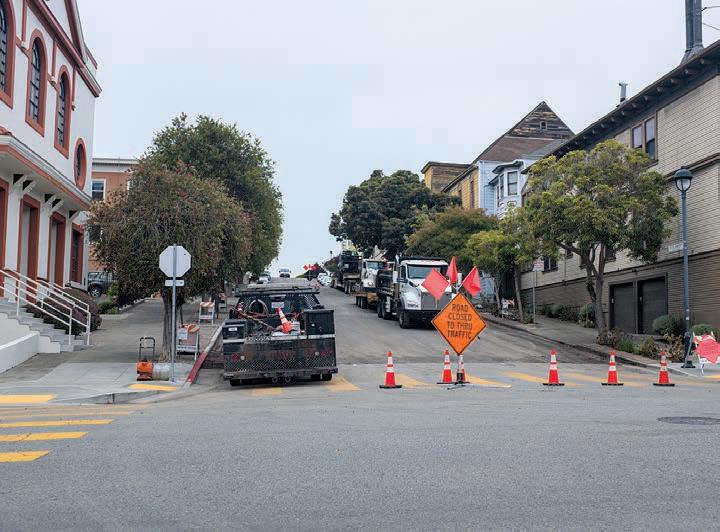




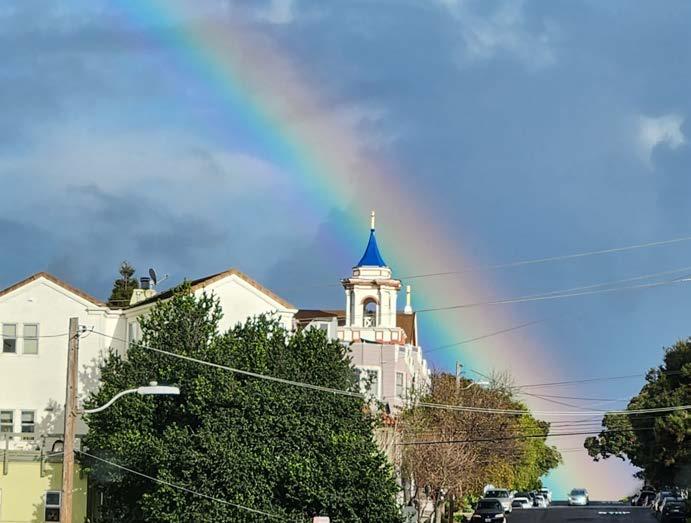
The 19th Street, 1400 block, stretch of road in front of St Teresa of Avila, was closed last month while a work crew resurfaced the asphalt. PHOTO: Thomas Hunter II



Left: House-height agave plant towers over Utah Steet. Right: Purple Alpine Aster flowers surround the Metamorphosis sculpture on 17th Street.
PHOTO: Madeline Cho
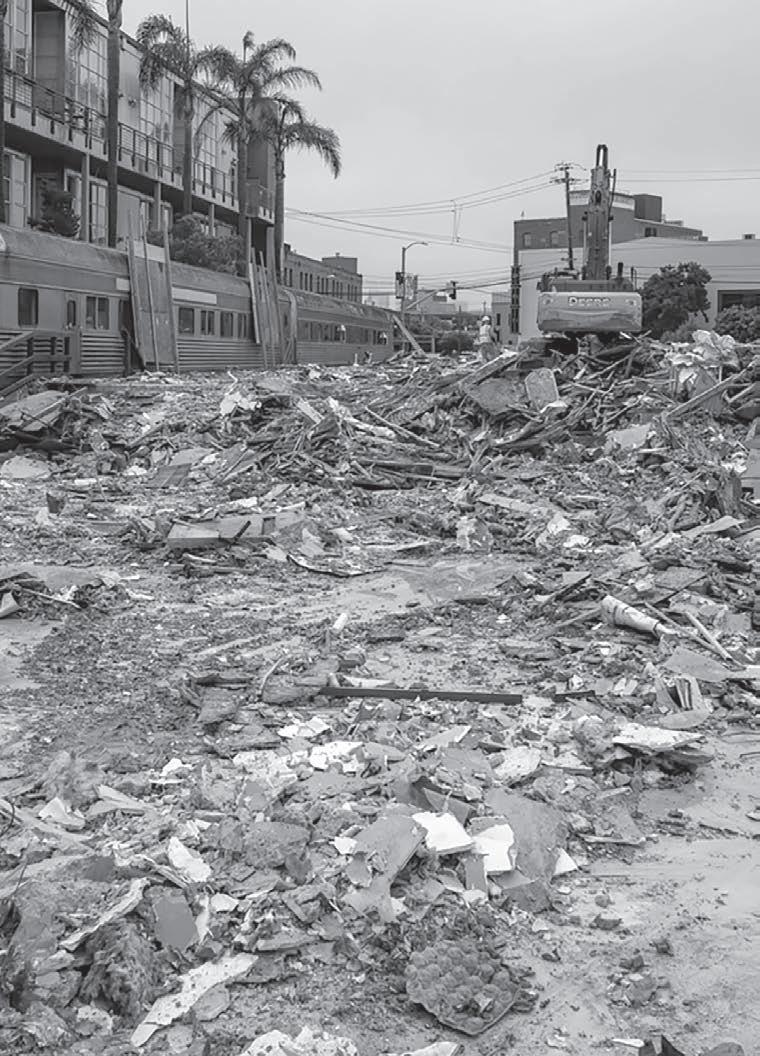
law, which sunsets in 2036, provides that developments that offer 10 percent of units to households making at or below 50 percent of average median income (AMI) are guaranteed streamlined ministerial – for example, exempt from the California Environmental Quality Act – approval in jurisdictions that have made insufficient progress towards their state-mandated Regional Housing Needs Allocation.
In 2024, San Francisco was identified as being subject to SB 423. As a result, developers don’t have to engage in community processes that the San Francisco Planning Department has labeled “cumbersome,” triggering the need for “trade-offs.”
The project is intended to serve “a diverse community of middle-income earners who have been priced out of San Francisco’s traditional rental market… available to individuals and families earning between 30 percent and 70 percent of the area median income, approximately $41,000 to $95,000 per year,” according to DM Development.
When it was first proposed six years ago the response from Potrero Hill residents was tepid.
“Everyone knows affordable housing is needed, but it’s the way and where that is done which largely goes unnoticed until you suddenly see your favorite businesses close,” said a longtime Hill resident, “Our local go-tos and housing are quickly being swallowed up without much say.”
“DM Developers engaged in conversations in 2019, with some dialogue with the SF Planning Department in 2020, but without any direct contact since,” said J.R. Eppler, Potrero Boosters president.
The average age of residents in Potrero Hill and adjacent areas is 37, with the cost of living roughly six percent and rents about nine percent higher
Crosswords
BY DENA WITKES
R. VERKUIL
than citywide averages. Rents in the neighborhood have increased by more than 20 percent over the last year, with studio rent prices jumping by roughly 50 percent.
Several developments in the neighborhood have long been filled, with a few listed as having more than 6,000 applicants for up to 150 units. In some cases, residences designated as affordable have different features than market-rate units, related to appliances, flooring, or other amenities.
“Potrero is more of a destination now, with added density and retail corridors on 17th, 18th, and 20th Streets,” said Eppler. “We’re happy to see new neighbors and visitors, but also that we have been able to keep our neighborhoods true to the community spirit.”
“We don’t know how much longer we can afford to live and work here given the commute and expenses,” said Alice and Kai, teachers who went through the housing lottery system. “We love the neighborhood, but we’re also concerned about how it’s changing.”
Some buildings in Potrero Hill have introduced Airbnb options or corporate residential units, with resident-renters and guests noting the appealing transitional environment for working in San Francisco, and the attractions of being in the community.
In addition to housing, the .62-acre lot will feature 6,000 square feet of retail space and 7,000 square feet of outdoor green area. Several nearby residential buildings have struggled to find commercial tenants. DM Development notified former commercial tenants that they can return when construction is finished, expected by the summer of 2027, a lifetime for a small business.
Those interested in renting a unit at the property can register online, but not yet on the city’s affordable housing lottery system, which is called DAHLIA.

DE HARO from front page
PHOTO: Ed Rudolph

Neighborhood Mosaics
BY PETER LINENTHAL




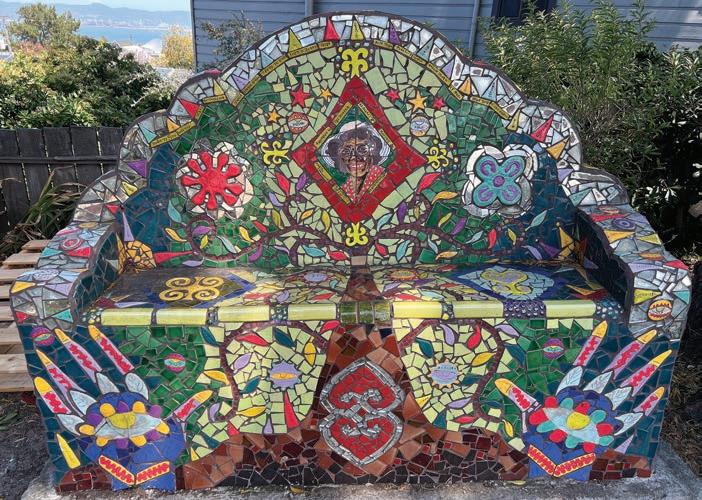
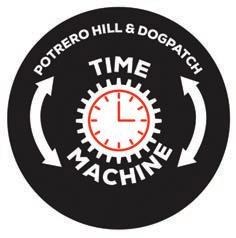

Maxwells Jerrold Avenue
This mosaic is part of a red granite Madonna made by Benjamin (Benny) Bufano in 1974, which stands in the comfort garden of San Francisco General Hospital on 20th Street east of Potrero Avenue. The garden was established in 1990 as a living memorial to hospital
Brotherhood of Man, by Anthony Stellon, was gifted to the City and County of San Francisco by then Mayor Joseph Alioto. The mural shows two figures, one black, one white, uniting above the Earth, Sun and cosmos, conjoined by the infinity symbol. The artist was moved by Martin Luther King Jr’s assassination to create an artwork symbolizing universal peace and unity. First installed
Center in Bayview, it was removed
Helen Bruton installing her mosaic mural at Starr King Elementary School. Matson Photograph from Sisters in Art by Wendy Van Wyck Good

CHOOSE A SHIRT OR CAP SUPPORT YOUR VIEW
To celebrate our 55th anniversary, The View is gifting one limited-edition t-shirt or cap for donations of $60 or more (while supplies last)!
55th ANNIVERSARY TEES
Unisex cotton t-shirts available in two designs printed in brown on natural tone fabric. Super comfy 100% preshrunk cotton jersey.
55th ANNIVERSARY CAPS
Mesh back truckers cap with an adjustable snapback closure available in two designs. Stone colored cap has brown imprint. One size fits all.
YES! I would like to support the View with my contribution of: $
Choose your gift: Limited Edition T-shirt: Newsboy Activist Circle size (unisex): M L XL
Please send my gift to:
Limited Edition Cap (one size): Newsboy Activist




Several thousand people visited the SF Art Book Fair 2025 in Dogpatch last month, which spanned multiple Minnesota Street Project buidlings.
PHOTO: Thomas Hunter II
“Activist” Tee on Cream
“Newsboy” Hat on Stone
“Newsboy” Tee on Cream
“Activist” Hat on Stone
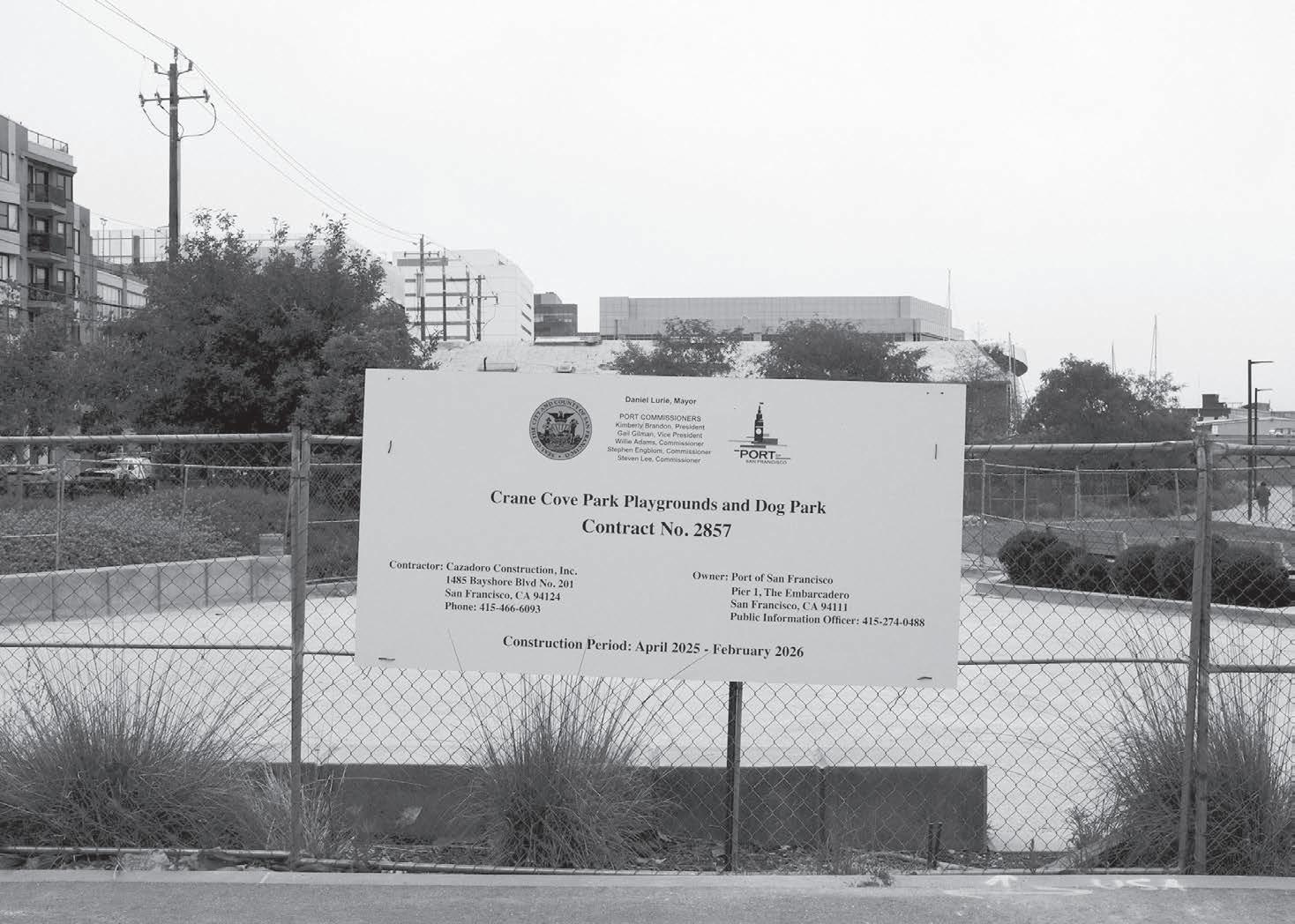
households with older adults - that are at risk to lose benefits as a result of new guidelines for work requirements, time limits on food assistance, paperwork requirements impacting adults 55 to 64, and parents with school-aged children 14 and older... These federal cuts will worsen food insecurity rates that are already at record high levels.”
According to Tatmon, volunteers are critical to the nonprofit’s operations: sorting produce and packing boxes, providing food to participants at food pantries, and delivering groceries to homebound neighbors.
parcel. Government entities, such as the California Department of Transportation, Caltrain, and University of California, San Francisco aren’t assessed.
GBD’s 2025 management district plan indicates that its expenditures may be adjusted to account for inflation, with assessments to be increased by no more than seven percent annually.
“In the 10 years that the GBD has existed, it has only raised rates one time. We take a very thoughtful and cautious approach to raising rates… have only done it when it was necessary to maintain the services that we have committed to providing to the community,” said Donovan Lacy, GBD acting executive director.
GBD works to improve parks, green spaces, and public plazas. The organization often deploys volunteers, and hires contractors to remove graffiti, prune trees and shrubs, cultivate plants and landscapes, among other activities. Vegetation can absorb water
during heavy rain, as well as calm traffic. GBD supplements San Francisco Public Works’ efforts, with regular street cleaning.
GBD sponsors entertainment and education-oriented events, such as jazz concerts and native plant walks. It collaborates with the Dogpatch Neighborhood and Potrero Dogpatch Merchants associations on the Dogpatch Music Series and annual Halloween Slow Street.
Present GBD projects include installation of artwork and maintenance at Potrero Gateway Park, alongside U.S. 101 between San Bruno, Vermont, 17th and Mariposa streets, as well as planting and irrigating native California species at the Vermont Greenway and Eco Patch on Vermont Street and the Minnesota Street Flyover; the 2,400 square foot space under the 20th Street overpass at Minnesota Street.
Property owners were “…in favor of the renewal because they and their tenants (saw) the benefit of actions like cleaning and greening public open spaces. The GBD’s work also makes their properties attractive to future tenants,” said Lacy, who also serves as Dogpatch Neighborhood Association president.
“The Green Benefit District has spent the last decade turning post-industrial lumps of coal in our community into publicly accessible diamonds,” said J.R. Eppler, Potrero Boosters president. “Its renewal will ensure the continued maintenance of those new open spaces for years to come.”
Eppler added that GBD regularly balanced its budget, solicited community feedback, and handled tasks ethically.
“I am thrilled with the outcome and look forward to the continued
good work from the GBD for Dogpatch,” said Susan Eslick, a GBD board member and Dogpatch Business Association treasurer. “The GBD has proved a very positive thing for people who live here and visit these two neighborhoods. Since the City is experiencing budget concerns, the GBD gives us a viable way to continue to clean and green the two neighborhoods to a level people have come to expect. Also, getting involved with GBD activities, meetings, and or volunteering at events are great ways to meet new friends and neighbors.”
“I helped canvas for the GBD’s renewal this spring,” said Jason Kelly Johnson, an artist, professor of architecture at California College of the Arts, and owner of a residential property in Dogpatch. “I and many other local artists support what the GBD is doing because it makes the area more liveable and sustainable. You can sense this in the American Industrial Center because you see a lot of “Support the GBD” signs on studio doors.”
Johnson and his wife, Nataly Gattegno, are raising two young daughters in Dogpatch. From 2019 to 2025, Johnson served on GBD’s Board. He created the sculptures, collectively titled “Metamorphosis,” installed at Potrero Gateway Park.
“What the GBD is doing helps make Dogpatch and Potrero Hill a good place to raise kids. It brings energy
to the neighborhood, encourages community engagement, and is supportive of the arts,” said Johnson.
PUBLISHER'S VIEW from page 2
entrepreneurs, artists, and others. Similarly, Non-Natives might value opportunities to interact with gifted Tribal members, who have a distinct understanding of how to approach problem-solving, relationships, and what it means to be human.
Likewise, exchanges between exceptional individuals living in Boston, the San Francisco Bay Area, and Seattle, and those who make Arkansas – ironically Fulbright’s birthplace, given that Trump received 64 percent of last election’s vote there – Mississippi and Wyoming home could help nurture greater understanding, as well
PUBLISHER'S VIEW continues on next page

A new playground is being constructed in front of the Dogpatch YMCA at Crane Cove, with an estimated completion date of February 2026.
PHOTO: Thomas Hunter II
FOOD BANK from front page
GBD from front page
"Trash Hill" Weeding Volunteer Day
"Trash Hill" Weeding Volunteer Day: Meet at 1151 Wisconsin St on Aug 16 & 17 at 12 p.m., to help me finish my "guerilla gardening" project on a hill. BRING GLOVES & SHOVEL. Burgers & drinks served after!
Sales Admin Assistant Wanted
Sales Administrative Assistant Wanted. (Very) part-time, to track and cultivate leads; support marketing efforts, identify new distribution spots. Contact: editor@potreroview.net.
Seeking Tennis Partner
Sixty-something male intermediate tennis player looking for (semi) regular rally or game partner. Email editor@ potreroview.net
Freelance Writers Wanted
Modest pay, interesting assignments. Contact: editor@potreroview.net
Legal Notices
The View accepts legal notices. Please contact: production@potreroview.net; 415.643.9578.
Write Your Own Obituary
We're all going to die; why leave the writing of your obit to someone else? Whether you believe the end is imminent or just something you contemplate idly whilst taking a shower, you can control your own destiny, or at least how it's reported. Or, after examining your life story and finding it lacking, add to it! Up to six people in three two-hour sessions, $150. Interested parties should contact editor@potreroview.net
Got something to sell? Have a service to provide? Each classified ad is $25 for up to 200 characters. www.potreroview.net/advertise
Subscribe to the View !
Annual subscription: $68 potreroview.net/product/subscribe/
as skill transfer, between ideologically, culturally, distinct places.
While not as large as economic differences between the United States and India, average income in San Francisco, about $70,000, is almost 60 percent higher than Little Rock’s roughly $40,000. The two places’ experiences of capitalism alone, its fruits and foils, are distinct
The optimism embedded in Fulbright’s idea is deeply American. We can make the world a better place, by sharing a handshake, bow, or cup of tea. It’s hard to completely dislike someone with whom you’ve had a meal. I may not share Indians’ belief in multiple gods –though can see it’s attraction – but relate to their strong sense of family loyalty and admire their respect for elders. A splintered America could benefit from an investment in experiencing the connections, and differences, between us.
WAR from page 3
At around 9:30 p.m., a group of us is standing on the balcony looking at the stars, when we notice missiles flying through the sky. For a few seconds, we stay where we are and stare into the night. A mixture of fear and excitement races through my body.
“We should go to the shelter,” one of my friends insists, though Home Front Command has remained silent. Two and a half seconds later, the blare of Home Front Command goes off.
We file into the reinforced room. Nine of us huddle together. Time doesn’t move.
“Israel took out Iran’s nuclear site,” one of my friends reads on her phone.
Iran is attacking back. It’s now war, this one with a powerful nation. Our eyes are glued to our phones, trying to read the news and make sense of what’s to come. We can feel the ground rumble.
“It just hit something,” another friend chimes in from the corner.
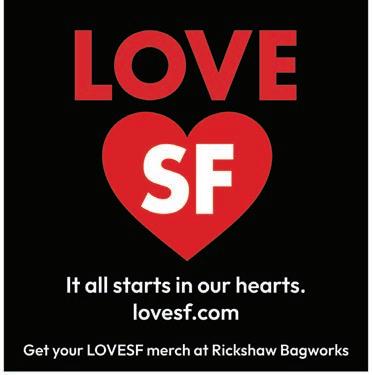

I’m the calmest I’ve ever been. We sit in the shelter for what feels like forever. Some people tense every time there’s a boom. Others try to make light of the situation by playing the Heads Up charades game. I’m not afraid, more annoyed or amused. I didn’t want to be in the shelter, but I was with friends drinking and playing games. Finally, Maya tells us we can leave. We scatter, everyone going their separate ways.
In my bedroom, I fall asleep but am soon awakened by another siren. A friend comes in and tells me to get to the shelter. I shuffle, half asleep. Didn’t we just have a siren? Why are there more sirens? Time passes; sometime later, we’re told we can leave.
My family in Israel texts, checking in on me. Not even two hours later in the middle of the night, my phone again blares, followed by the sound of the siren. I leap out of bed, heart pounding.
Within the coming days, Onward participants would be evacuated from Tel Aviv and transported to the Dead Sea, further away from Iranian targets, though not so far from an Israeli nuclear site. We’re told we’d be there for a week. A few days after we’ve arrived we’re instructed that we were being evacuated by boat to Cyprus because the airport is closed.
I’m hard-pressed to describe what it feels like to have a new stage of life that’s just beginning abruptly shattered by war, followed by a hurried evacuation to safety. I was rarely scared, maybe because most of the Americans around me, and none of the Israelis, showed fear, though plenty of irritation and stress. Perhaps I’d already become acclimated to the constant need to duck and cover. The deepest emotion I ultimately felt was heartbreak that I had to leave a community, my family and an adventure I had only just started.
Living in the United States, I only knew about military conflict from reading articles or watching the news. Never once did I think I’d be part of the story.
potreroview.net
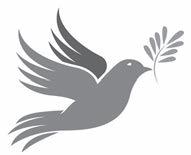
Celebrate Your Loved Ones
Your community wants to know about and celebrate the life of loved ones who've passed on, as well as other life-cycle events. Consider placing notices in the View, at half the price of regular advertising rates. We can also write what needs to be said for a modest fee.
PUBLISHER'S VIEW from previous page
























